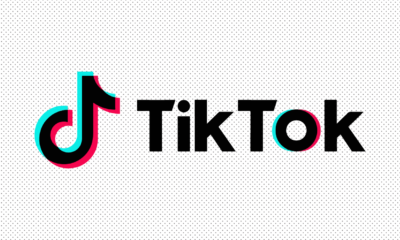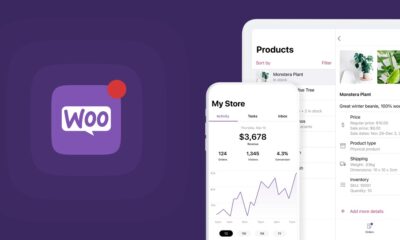Technology
5 SEO Tips for Creative Professionals: How Designers Can Boost Their Visibility


What Are The Most Effective SEO Strategies For Designers?
The most effective SEO strategies that work for designers include optimizing portfolio websites with Suitable keywords, creating high-quality shareable content, building a strong backlink profile, improving technical site performance, and getting social signals. According to a 2023 study by Backlinko, Creative professionals in the industry who deployed these specific SEO strategies got an increase of 78% in organic visibility within six months.
How Can Designers Optimize Their Portfolio Websites For Search Engines?
Designers can optimize their portfolio websites for search engines by deploying proper keyword research, crafting descriptive metadata, and building a top-notch logical site structure. Research from the Digital Marketing Department of Stanford University highlights that design portfolios with strategically placed industry-specific keywords in headers, titles, and image alt text get a 67% rise in organic traffic compared to those without the optimization. And this highlights the importance of optimization.
Keyword Research & Implementation
Tools like Ahrefs, SEMrush, and Google Keyword Planner give high-value keywords with Good competition levels. Include these terms in:
- Page titles (H1 tags)
- Subheadings (H2, H3 tags)
- Image alt text
- Meta descriptions
- Portfolio project descriptions
- URL structures
The University of Pennsylvania’s SEO Analysis Group researched that designers who include location-specific keywords (e.g., “logo designer in Chicago”) attract 43% more local client inquiries compared to those who were only using generic keywords.
Portfolio Metadata Optimization
Each portfolio requires complete metadata to get high search visibility:
- Descriptive file names for all images
- Structured data markup for creative works
- Comprehensive alt text describing each visual
- Descriptive project titles containing primary keywords
- Structured data markup for creative works
- Detailed project descriptions with relevant secondary keywords


How Does Content Creation Improve A Designer’s Search Visibility?
Creative professionals who publish at least two industry-related blog posts monthly generate 3.5x more inbound leads than those without content strategies, according to Content Marketing Institute’s 2023 Creative Industry Report. Content creation improves a designer’s search visibility by establishing authority, providing valuable information to potential clients, and creating opportunities for both backlinks and social sharing.
Effective Content Types for Designers:
- Case studies detailing successful client projects (with measurable results)
- Tools and resources reviews
- Design process documentation showing methodology
- Design tutorials and educational content
- Industry trend analysis and forecasting
- Before/after project transformations
What Technical SEO Factors Matter Most For Creative Portfolios?
Technical SEO factors that matter most for creative portfolios include page load speed, mobile responsiveness, proper indexing, and secure connections. MIT Technology Review data shows that 53% of visitors left the design websites that took longer than 3-3.5 seconds to load, affecting both user experience and search rankings.
Critical Technical Optimizations
Page Speed Optimization:
- Compress and properly format portfolio images
- Use content delivery networks (CDNs)
- Minimize HTTP requests
- Implement browser caching
Mobile Responsiveness:
- Ensure responsive design across all devices
- Optimize touch elements for mobile users
- Test navigation usability on mobile interfaces
Security Implementation:
- Install SSL certificate (HTTPS)
- Configure secure forms for client inquiries
- Set up proper redirects from HTTP to HTTPS
Indexing Structure:
- Create and submit XML sitemaps
- Use canonical tags to prevent duplicate content issues
- Implement proper robots.txt configuration


How Important Are Backlinks For Designers’ SEO Success?
Backlinks are very important for designers’ SEO success, functioning as quality signals that directly influence search rankings and domain Authority. Cornell University’s Digital Marketing Research found that creative professionals with different backlinks from industry publications rank 2.3x higher compared to competitors with fewer quality backlinks.
Effective Backlink Strategies for Designers
Guest Posting:
- Create valuable, non-promotional content that showcases expertise
- Contribute articles to design blogs, magazines, and industry publications
- Include relevant biographical information with portfolio links
Directory Listings:
- Register with reputable design directories and creative platforms
- Join professional organizations with member directories
- Complete, comprehensive profiles on Behance, Dribbble, and Adobe Portfolio
Collaboration Networks:
- Partner with complementary professionals (copywriters, developers, photographers)
- Exchange testimonials and links with industry partners
- Create case studies about successful collaborative projects
Award Submissions:
- Enter design competitions and awards programs
- Display award badges on your website with backlinks to awarding organizations
- Leverage recognition through published winner announcements
How Can Social Media Improve A Designer’s Search Visibility?
The Marketing Analytics Department of Northwestern University found that designers who share original content across like-minded platforms receive 218% more website visits from search results compared to those with minimal social presence. Social media improves a designer’s search visibility by increasing content reach, driving referral traffic, and creating social signals that give an indirect benefit to SEO.
Platform-Specific Optimization Tactics
Instagram:
- Use strategic hashtags (mix of popular and niche terms)
- Post consistently (3-5 times weekly)
- Link portfolio website in bio and stories
- Create carousels showcasing design processes
Pinterest:
- Create vertical pins optimized for search
- Link directly to relevant portfolio pages
- Include keywords in pin descriptions
- Develop board structures aligned with services
LinkedIn:
- Publish long-form articles on design topics
- Optimize profile with industry-relevant keywords
- Showcase portfolio projects with detailed case studies
- Engage with industry conversations
Behance/Dribbble:
- Fully optimize profile information
- Include links to the primary portfolio website
- Post consistently and engage with the community
- Tag projects with appropriate categories and keywords
What Metrics Should Designers Track To Measure SEO Success?
Designers should track several key metrics to measure SEO success, including organic traffic growth, conversion rate, keyword rankings, and engagement metrics. Digital Experience Lab research indicates that creative professionals who regularly analyze these specific metrics adjust their strategies 58% more effectively than those who track minimal data.
Essential SEO Metrics for Designers
| Metric | Importance | Tools for Measurement |
|---|---|---|
| Organic Traffic | Measures overall search visibility | Google Analytics, Matomo |
| Keyword Rankings | Tracks position for target search terms | SEMrush, Ahrefs, Moz |
| Bounce Rate | Indicates content relevance | Google Analytics, Hotjar |
| Time on Site | Reflects engagement quality | Google Analytics, Fathom |
| Conversion Rate | Measures lead generation effectiveness | Google Analytics, HubSpot |
How Can Designers Implement SEO Without Compromising Creativity?
Designers can implement SEO without compromising creativity by integrating optimization naturally into their work routine, prioritizing user experience, and focusing on authentic content. According to RISD’s Digital Marketing Department, 86% of clients choose designers whose websites balance visual appeal with easy searchable.
Balancing SEO and Design Integrity:
- Begin with research to understand potential client search behavior
- Structure portfolio categories based on service-oriented keywords
- Create navigation structures that satisfy both users and search engines
- Use visual hierarchy to emphasize both design and keyword-rich elements
- Develop content that naturally incorporates relevant terms


What Are Common SEO Mistakes Designers Should Avoid?
Common SEO mistakes designers should avoid include neglecting mobile optimization, using Large image files without optimization, creating portfolio sites with minimal text content, ignoring metadata, and failing to create descriptive project documentation. Digital Marketing Analysis of Harvard Business School indicates these errors reduce organic traffic potential by up to 73% for creative professionals.
Critical SEO Errors to Prevent:
- Flash-based or JavaScript-heavy portfolios that search engines struggle to index
- Image-only content without supporting text context
- Minimal content depth on service pages
- Generic portfolio descriptions lacking specific details
- Neglecting site speed optimization for large visual files
- Focusing solely on visual appeal at the expense of usability
- Inconsistent NAP information (Name, Address, Phone) for local SEO
How Can Designers Leverage Local SEO For Their Business?
Designers can leverage local SEO for their business by optimizing Google Business Profile listings, creating location-specific content, obtaining local backlinks, and encouraging client reviews. University of Chicago Business School research shows that creative professionals with optimized local SEO receive 340% more inquiries from nearby clients than those without local optimization.
Local SEO Implementation Strategies
Google Business Profile Optimization:
- Claim and verify a business listing
- Select appropriate categories (Graphic Designer, Web Designer, etc.)
- Add portfolio examples to the photo gallery
- Maintain consistent business hours and contact information
Location-Specific Content:
- Create service pages targeting local areas
- Develop case studies featuring local clients
- Publish content about local design trends or events
- Include location-based testimonials from regional clients
Local Citation Building:
- Ensure consistent NAP information across all platforms
- Register with local chambers of commerce and business directories
- Join local professional associations with online directories
- Participate in local business networking groups with an online presence
By implementing these targeted SEO strategies, creative professionals can significantly increase their visibility while maintaining design integrity and professional standards. The combination of technical optimization, quality content creation, and strategic networking creates a sustainable foundation for organic growth in competitive design markets.



 General2 months ago
General2 months agoWhat Is Smart Construction? A Beginner’s Guide



 Technology1 month ago
Technology1 month agoHow to Send WooCommerce SMS Notifications for Orders





 Technology1 month ago
Technology1 month ago7 Essential TikTok Metrics to Track for Higher TikTok Views in 2025

 Model4 weeks ago
Model4 weeks agoTiffany Stratton: Biography, Wiki, Age, WWE Career, Net Worth, Before Fame, Boyfriend



 Technology4 weeks ago
Technology4 weeks agoTop 5 Tips for Using File Uploads in Your WooCommerce Store Efficiently

 Technology3 weeks ago
Technology3 weeks agoWhy Airlines Are Using Virtual Reality Services for Pilot Training



 General4 weeks ago
General4 weeks agoThe Hidden Costs of a DUI & How a Lawyer Can Help You Avoid Them





 Technology3 weeks ago
Technology3 weeks agoExploring TikTok AI: My Experience Making a Video With Only Artificial Intelligence





You must be logged in to post a comment Login